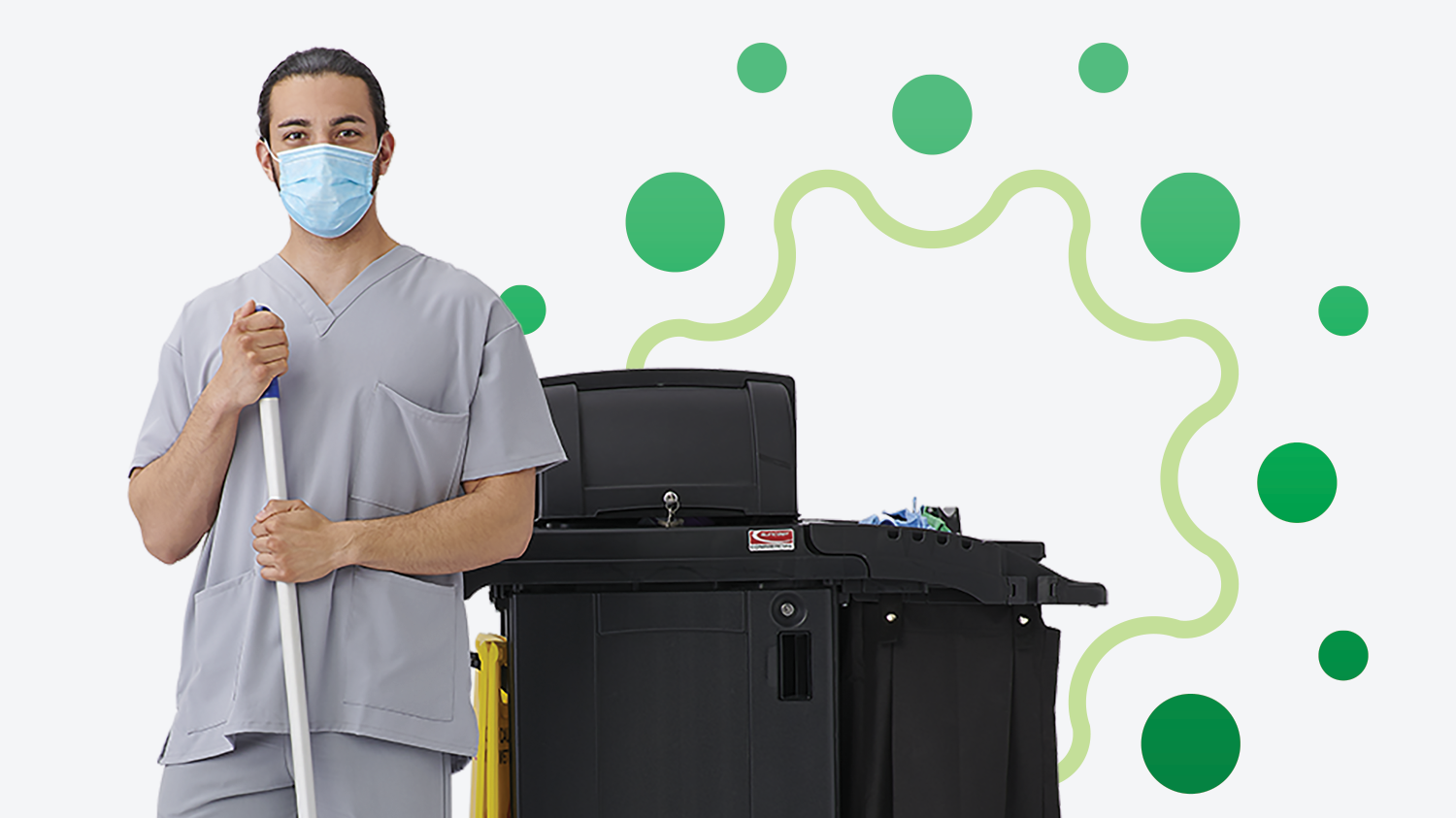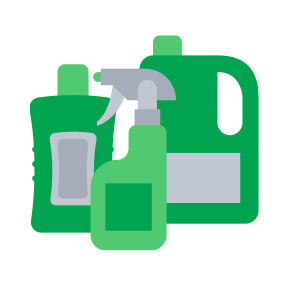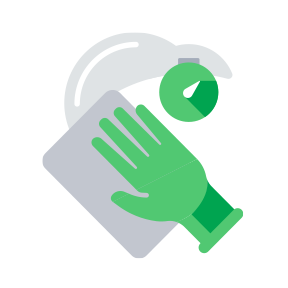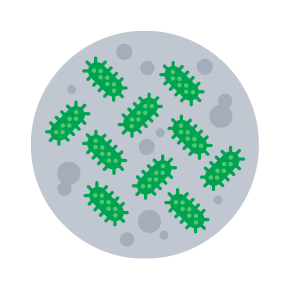10 ways to make your EVS standards practical and routine
Healthcare environmental services staff need the right process/products.

Less than 50%
of healthcare room surfaces are adequately cleaned and disinfected, studies show1
This kind of statistic isn’t lost on Environmental Services (EVS) directors and managers, who are tasked with keeping healthcare facilities—from common areas to patient and resident rooms—clean and disinfected to reduce the spread of harmful infection-causing pathogens.
Also on their minds, however, are any number of challenges getting in the way of HAI prevention and reduction in their facilities:
Pressure to turn rooms more quickly, making it difficult to acceptably clean and disinfect the care environment.
Understaffed and underbudgeted EVS departments, where staff turnover averages 40 to 50 percent, requiring continuous training of new hires—many of whom speak English only as a second language.
Limited staff knowledge about the environment of care and their role in preventing infection and cross contamination—it’s one of the three zones in the healthcare facility where harmful pathogens can be transmitted on surfaces, in the air and water.
Lack of an industry practice standard when it comes to proper cleaning and disinfection protocols, including the most suitable technologies and products for usage.
Still, there are ways to set a standard for cleaning and disinfection to keep HAIs down in your facility that workers will realistically incorporate into their practices and routines—through products and processes that are designed for efficacy, efficiency and safety.
10 things to consider:
1. In general, adopt processes and choose products that are evidence-based, designed specifically for healthcare and safe for EVS frontline workers to use.
2. Implement a clean-by-sequence process that effectively addresses the high-touch surfaces recognized by the CDC that are most vulnerable to the spread of pathogens.
3. Use numbered microfiber booklets to ensure the use of a separate color-coded cloth for each surface and that no surface is missed.

4. Pick a simple suite of disinfectants that are safe and easy for EVS frontline workers to use.

5. Make sure your team understands “contact time” (the length of time a disinfectant must stay wet on a surface in order to ensure efficacy) and consider a disinfectant with a 3-minute contact time that takes fewer applications.

6. Remind your team how pathogens multiply—one microorganism replicates to more than 1 million in 10 to 12 hours2—and equip them with a disinfectant that has a high log reduction (the percent of pathogens killed by a disinfectant on a surface).
7. Improve efficiency by investing in UV disinfection devices that do not require workers to operate. These can kill up to 99.99% of harmful airborne and surface pathogens that may still survive traditional methods of cleaning and disinfection.
8. Establish a surface validation program and use cleaning validation tools, such as ATP testing to monitor and measure cleanliness levels in your facility.
9. Demonstrate to EVS workers that their team and the work they do is important and valued by equipping them with up-to-date technologies and products that not only effectively clean and disinfect but are also safe and easy to use. Acknowledge the pride they take in their work by providing them with high-end housekeeping carts and uniforms if they don’t already have them.
10. Take advantage of available resources designed to increase EVS workers’ frontline skills and further drive efficacy, efficiency and safety. These include online and in-person training, recognition and certification, and tools and signage.
Key takeaway
To set a standard for cleaning and disinfection that’s practical and routine, establish an environmental services program that emphasizes people, process and products to prevent and reduce HAIs and keep everyone in your facility safe. Consider an offering that includes:
- Best-practice guidance
- Staff education and training
- A system of products that’s evidence-based and supports best practices
References:
- Tyan, B, and Cohen, P. (2020, May 1). Investing in Our First Line of Defense: Environmental Services Workers. Annals of Internal Medicine, M20-2237. Investing in Our First Line of Defense: Environmental Services Workers | Annals of Internal Medicine (acpjournals.org)
- Pray, L. (2008) Antibiotic resistance, mutation rates and MRSA. Nature Education 1(1):30
